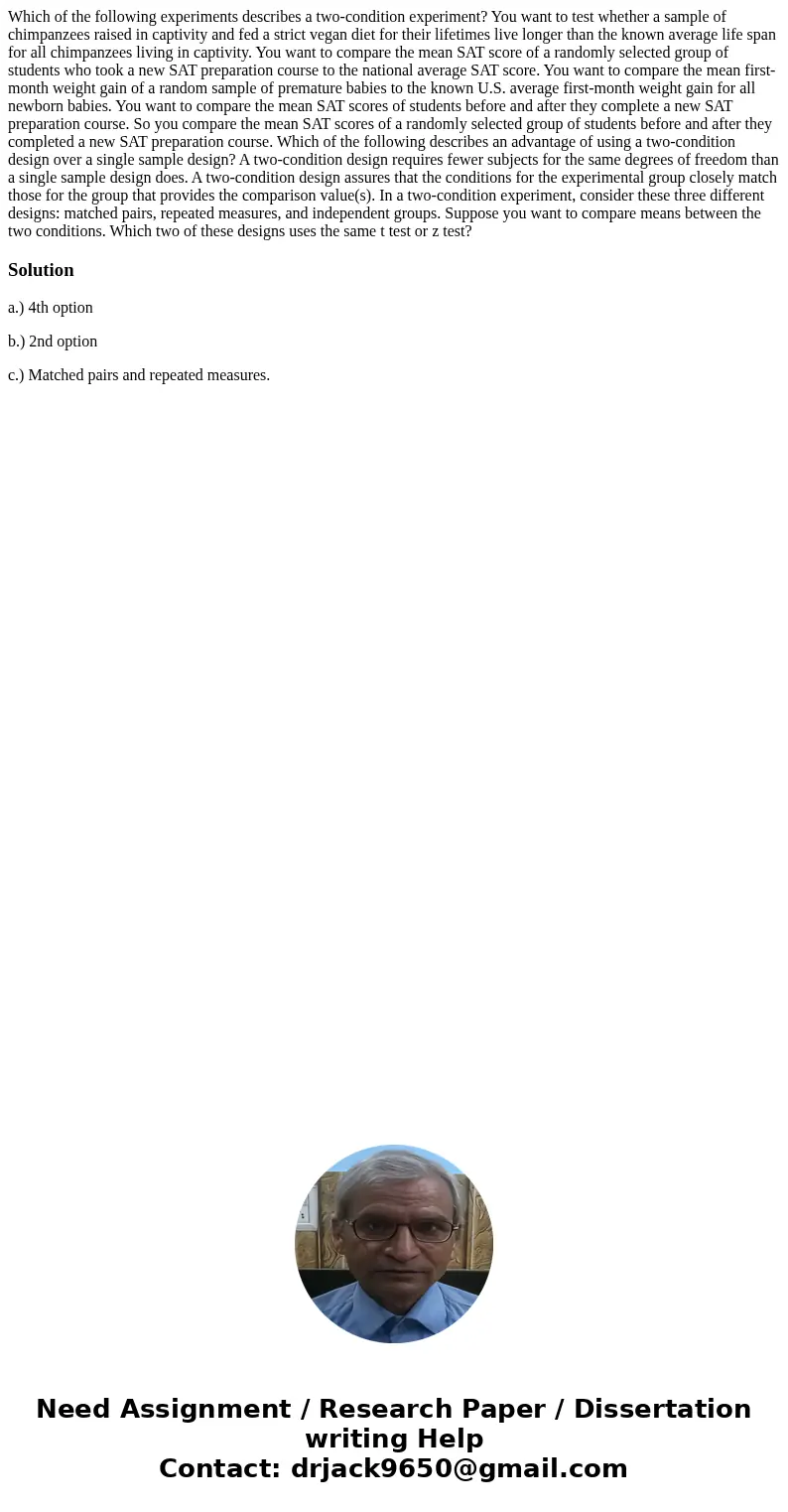Which of the following experiments describes a twocondition
Which of the following experiments describes a two-condition experiment? You want to test whether a sample of chimpanzees raised in captivity and fed a strict vegan diet for their lifetimes live longer than the known average life span for all chimpanzees living in captivity. You want to compare the mean SAT score of a randomly selected group of students who took a new SAT preparation course to the national average SAT score. You want to compare the mean first-month weight gain of a random sample of premature babies to the known U.S. average first-month weight gain for all newborn babies. You want to compare the mean SAT scores of students before and after they complete a new SAT preparation course. So you compare the mean SAT scores of a randomly selected group of students before and after they completed a new SAT preparation course. Which of the following describes an advantage of using a two-condition design over a single sample design? A two-condition design requires fewer subjects for the same degrees of freedom than a single sample design does. A two-condition design assures that the conditions for the experimental group closely match those for the group that provides the comparison value(s). In a two-condition experiment, consider these three different designs: matched pairs, repeated measures, and independent groups. Suppose you want to compare means between the two conditions. Which two of these designs uses the same t test or z test?
Solution
a.) 4th option
b.) 2nd option
c.) Matched pairs and repeated measures.

 Homework Sourse
Homework Sourse